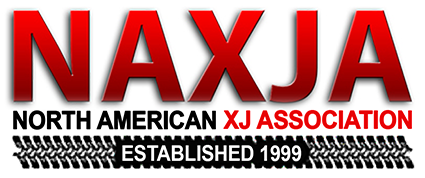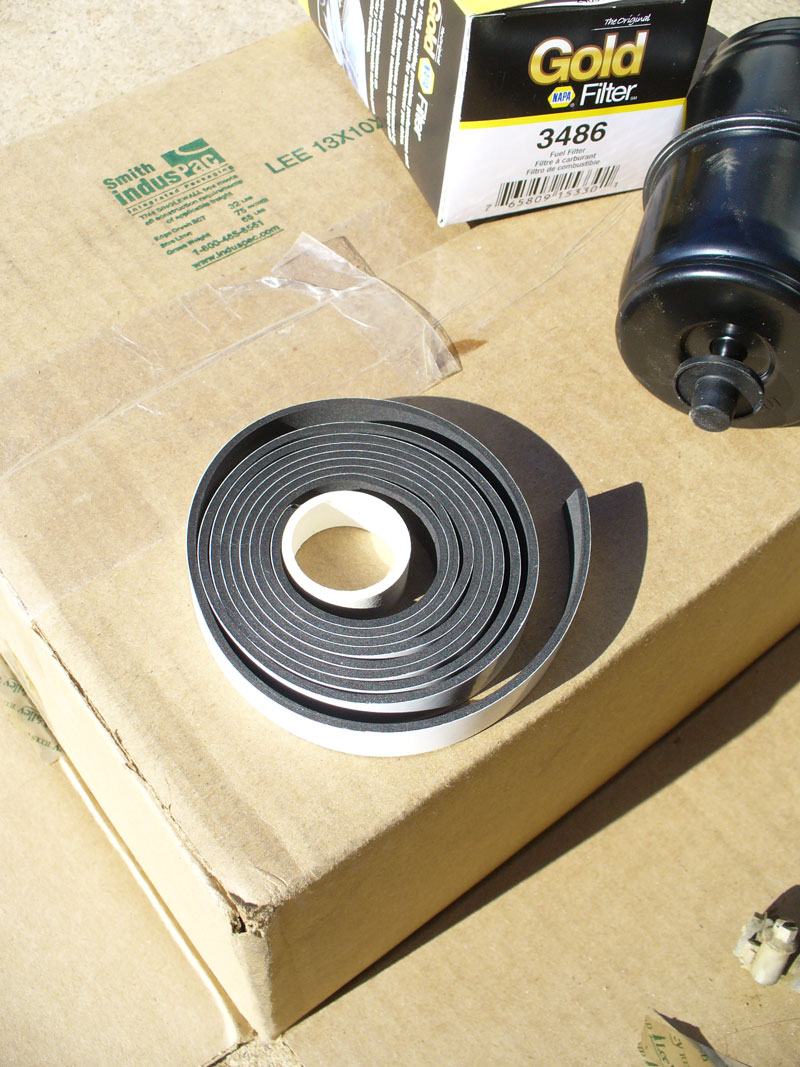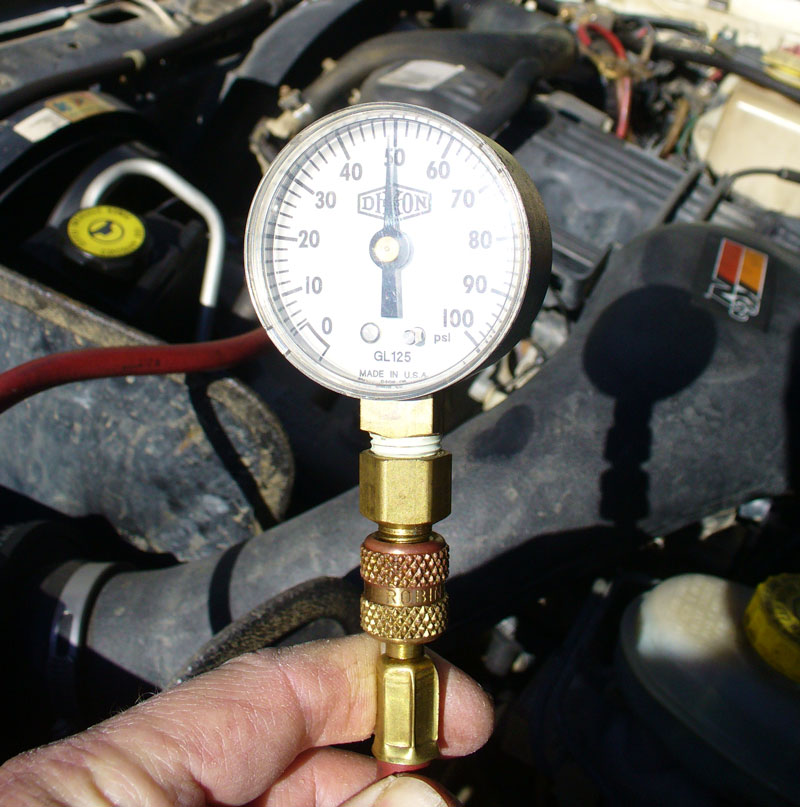- Location
- In a strange land
I spend far more time looking for information here than I do offering it, but this was today's project, and I hope it might be of use to someone else with a '96. Some of these details are things I really wish I would have known in advance, others are things which are out there to be found, but I could not find them all in one place. Other things may just be clarifications.
The 1996 Cherokee is a bit of an odd year out with regard to the fuel pump and regulator assembly. Prior years have a fuel supply line, a return line and a regulator on the fuel rail. Later years have a completely different tank and completely different pump/regulator assembly. '96 is all by itself.
Much of the information I came across said that a regulator for a '96 could not be obtained all by itself, or that it was not even a replaceable part. This was a bit disturbing, particularly since some of these sources cited the differences in fuel pressure for a '96 vs the prior years (a '96 should be 49 psi +/-5 psi), yet when I looked at parts offerings, the regulators I could find were listed as being correct for '91-'96. And then there is the question of whether or not some '96s had the regulator on the rail, and so would there be two different regulators? And was I not able to find the unique one I needed?
I couldn't find definitive answers, so, I tore into the job with the parts I could find. There's always learning the hard way.
Problem history: Vehicle was getting to be hard to start. After the first time it surprised me by not starting up right away I did some research and found out about the problem of a leaking check valve. The poor man's solution was to let the pump prime the system first. Not a problem. I have diesels. I am used to letting the system take its time getting ready. But then it got progressively worse. I would have to turn the key on and off multiple times before it would finally start. Sometimes I would get it to start and then it would die on me for want of fuel. I would have to go back to priming it all over again. Finally, it died entirely. Fortunately at home, but unfortunately with a half tank of gas.
Everything I have read says that it is better to drop the tank than to try this job with the tank still in the vehicle, but with a half tank I wasn't too keen on trying to drop it. I did attempt to set up a siphon, but I couldn't get a line through the filler neck and into the fuel. I tried disconnecting the line at the fuel filter and tried to get it to siphon, but no luck there either. At that point I decided I would try the job with the tank still in place.
With the fuel line removed and the pump harness unplugged it wasn't particularly difficult to remove the pump assembly. Fortunately the fuel level was low enough to not be up to the height of the access hole for the assembly. The only challenge was figuring out which way to turn the assembly to get past each hang-up it offered on the way out. I did not come across much in terms of pictures of this assembly. Here are some of my own pics for those who may want to see what this unit looks like (note: the modified regulator is not what you should find--this is another version of hack and tap).






I suspect that modified regulator was a previous owner's attempt to increase fuel pressure. It is entirely possible that they came up with the same quandary I did and concluded that the only regulator they could obtain was the earlier, lower pressure version. I have no idea how they would have gone about adjusting pressure on an inaccessible regulator. I don't even want to think about it.
I went with the only version of a regulator I could come up with, ordered from Morris 4x4. It is a Crown 53030001. Those numbers matched the hacked one I removed. This is what the correct fuel pressure regulator should be:

Note that flat rubber gasket on top--that is the old one. I did not receive a new one. The new regulator came with new O-rings, but not that gasket. On the other hand, that gasket should be a very easy one to make, and I think it does little more than serve as a spacer.
Break here--before I max out on the number of images I can put in a post.
The 1996 Cherokee is a bit of an odd year out with regard to the fuel pump and regulator assembly. Prior years have a fuel supply line, a return line and a regulator on the fuel rail. Later years have a completely different tank and completely different pump/regulator assembly. '96 is all by itself.
Much of the information I came across said that a regulator for a '96 could not be obtained all by itself, or that it was not even a replaceable part. This was a bit disturbing, particularly since some of these sources cited the differences in fuel pressure for a '96 vs the prior years (a '96 should be 49 psi +/-5 psi), yet when I looked at parts offerings, the regulators I could find were listed as being correct for '91-'96. And then there is the question of whether or not some '96s had the regulator on the rail, and so would there be two different regulators? And was I not able to find the unique one I needed?
I couldn't find definitive answers, so, I tore into the job with the parts I could find. There's always learning the hard way.
Problem history: Vehicle was getting to be hard to start. After the first time it surprised me by not starting up right away I did some research and found out about the problem of a leaking check valve. The poor man's solution was to let the pump prime the system first. Not a problem. I have diesels. I am used to letting the system take its time getting ready. But then it got progressively worse. I would have to turn the key on and off multiple times before it would finally start. Sometimes I would get it to start and then it would die on me for want of fuel. I would have to go back to priming it all over again. Finally, it died entirely. Fortunately at home, but unfortunately with a half tank of gas.
Everything I have read says that it is better to drop the tank than to try this job with the tank still in the vehicle, but with a half tank I wasn't too keen on trying to drop it. I did attempt to set up a siphon, but I couldn't get a line through the filler neck and into the fuel. I tried disconnecting the line at the fuel filter and tried to get it to siphon, but no luck there either. At that point I decided I would try the job with the tank still in place.
With the fuel line removed and the pump harness unplugged it wasn't particularly difficult to remove the pump assembly. Fortunately the fuel level was low enough to not be up to the height of the access hole for the assembly. The only challenge was figuring out which way to turn the assembly to get past each hang-up it offered on the way out. I did not come across much in terms of pictures of this assembly. Here are some of my own pics for those who may want to see what this unit looks like (note: the modified regulator is not what you should find--this is another version of hack and tap).






I suspect that modified regulator was a previous owner's attempt to increase fuel pressure. It is entirely possible that they came up with the same quandary I did and concluded that the only regulator they could obtain was the earlier, lower pressure version. I have no idea how they would have gone about adjusting pressure on an inaccessible regulator. I don't even want to think about it.
I went with the only version of a regulator I could come up with, ordered from Morris 4x4. It is a Crown 53030001. Those numbers matched the hacked one I removed. This is what the correct fuel pressure regulator should be:

Note that flat rubber gasket on top--that is the old one. I did not receive a new one. The new regulator came with new O-rings, but not that gasket. On the other hand, that gasket should be a very easy one to make, and I think it does little more than serve as a spacer.
Break here--before I max out on the number of images I can put in a post.












